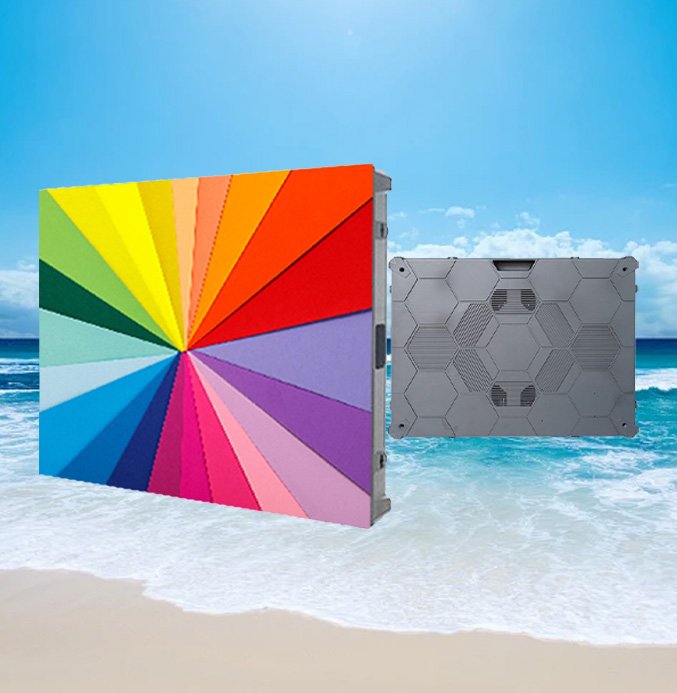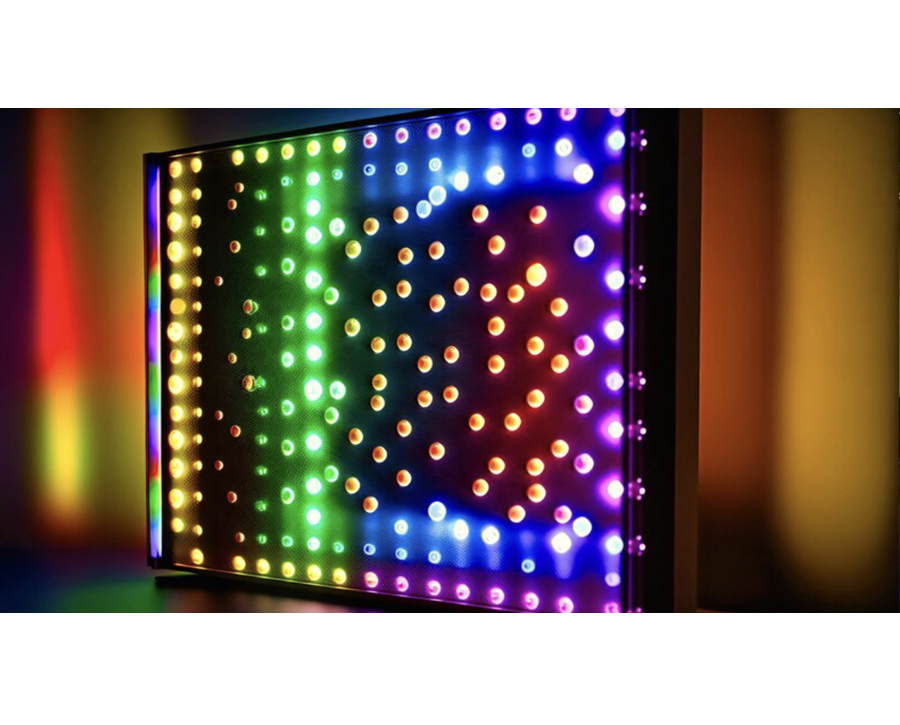
Deciding between the Full-Array LEDs and the mini-LED is not always easy. One of the biggest pros is that the picture quality on both is incredible despite the two having their own differences. We’ll explore the options to make it easier to opt for the preferred technology type.
Understanding Full Array and Mini LEDs
What is Full Array LED?
Full Array LED uses backlighting technology in LCD screens. Unlike edge-lit displays, Full Array LEDs feature a grid of LED lights placed directly behind the screen. This design provides precise control over dimming zones, improving contrast and minimizing light bleed.
Key Features of Full Array LEDs:
- Local Dimming: Enhances contrast by dimming specific areas of the backlight.
- Brightness: Provides consistent and uniform illumination across the screen.
- Applications: Common in mid-range and premium TVs and monitors.
What is Mini LED?
Mini LED takes the principles of Full Array LED to the next level by using significantly smaller LEDs—often 1/40th the size of traditional LEDs. This allows manufacturers to fit thousands of LEDs behind the screen, offering greater precision in backlight control.
Key Features of Mini LEDs:
- Finer Control: Thousands of dimming zones lead to richer contrast and deeper blacks.
- Improved HDR Performance: Ideal for HDR10+ and Dolby Vision content.
- Compact Design: Enables thinner displays without sacrificing performance.
Key Differences Between Full Array and Mini LEDs
Backlighting Technology
Full Array LEDs use fewer, larger LEDs arranged in a grid. While effective, this approach can sometimes result in light blooming—where bright areas bleed into dark ones.
Mini LEDs, by contrast, use thousands of smaller LEDs, enabling precise dimming zones. This dramatically reduces blooming and enhances the viewing experience, especially for high-contrast scenes.
Brightness and Contrast
Full Array LEDs offer excellent brightness levels, but their performance in dark rooms can sometimes fall short due to limited dimming zones.
Mini LEDs excel here, offering higher brightness and deeper contrast thanks to their superior local dimming capabilities. This makes them ideal for environments with mixed lighting conditions.
Energy Efficiency and Longevity
Both technologies are energy-efficient compared to older LCD displays, but Mini LEDs generally consume less power. The smaller diodes are also more durable, resulting in a longer lifespan for Mini LED-based devices.
Advantages of Full Array LEDs
Full Array LED technology stands out for its versatility and performance in a variety of settings. Below are the key benefits it offers:
- Superior Contrast and Black Levels
Full Array LED panels utilize localized dimming zones to achieve precise control over brightness and contrast. This creates deeper blacks and prevents halo effects, making them ideal for cinematic experiences, especially for watching HDR content.
- Uniform Brightness
Unlike edge-lit displays, Full Array LEDs offer even brightness distribution across the screen. This feature enhances viewing experiences on larger displays, ensuring there are no darker or brighter patches to distract the viewer.
- Gaming Excellence
Full Array LEDs are suitable for gamers as they offer comparatively high refresh rates and low levels of input lag. These attributes make the game less laggy and more responsive in dynamical-action games like, action games, racing games, etc.
- Longevity and Reliability
These displays are less prone to issues like burn-in, offering consistent performance over time. Full Array LEDs are often regarded as a durable option for users who want long-term value.
- Evolving Technology
Recent developments, such as AI-enhanced dimming and integration with quantum dot technology, continue to enhance the performance of Full Array LEDs. These upgrades ensure they remain a compelling choice for users seeking a balance of cost and quality.
Advantages of Mini LEDs
Mini LEDs can be considered as the evolution stage in backlight technology that offer high performance enhancements. Here’s what makes them stand out:
- Enhanced Precision and Detail
With thousands of tiny LEDs, Mini LED panels enable more precise local dimming, resulting in better contrast and reduced blooming. This precision makes them highly suitable for content creators and home theater setups.
- Unmatched Brightness
Mini LEDs excel in delivering high peak brightness levels. This makes them suitable for environments with ample ambient light, such as living rooms with large windows.
- Energy Efficiency
Since Mini LEDs are smaller compared to the typical LEDs, they are used in a power-efficient manner, which makes them use environmentally friendly solutions.
- Slim and Lightweight Designs
Mini LEDs are a new innovative solution that opens the possibility for thinner, lighter screens as needed for slim TVs, laptops, and monitors.
- Burn-In Resistance
Mini LEDs do not suffer from burn-in, making them a more durable option compared to Full Array LEDs. This reliability is particularly important for devices displaying static images for extended periods.
Use Cases for Each Technology
Choosing between Full Array and Mini LED displays depends on your specific needs. Here’s a breakdown of when to opt for each:
Full Array LEDs
- Home Theaters: Ideal for large TVs used in dimly lit rooms, offering immersive cinematic experiences.
- Professional Settings: Great for photographers, video editors, and designers due to their accurate color reproduction.
- Affordable Large Screens: Full Array LEDs provide reliable performance at a reasonable price for large-screen displays.
Mini LEDs
- Gaming Monitors: Superior brightness and minimal blooming make Mini LEDs perfect for competitive gaming.
- Portable Devices: Their slim profile is a great fit for laptops and tablets where weight and size are key considerations.
- Hybrid Workspaces: Mini LEDs are perfect for multitasking because these produce both functionality for working and fun for gaming or watching movies.
- Emerging Tech: Mini LEDs have also started featuring in AR/VR systems because they are rather small and have a high pixel density.
For users with certain demands, such as lower power consumption or exterior appearance, Mini LEDs provide the win. On the other hand, Full Array LEDs are still the best for those who want efficiency without necessarily buying an expensive LED.
Cost Comparison and Value for Money
When comparing the costs of Full Array and Mini LED displays, each technology offers distinct advantages based on budget and preferences:
Full Array LEDs
- Affordability: Full Array LEDs displays are generally more cost-effective, providing excellent performance at a mid-range price point.
- Reliability: For users prioritizing durability and consistent performance, Full Array LEDs deliver great value.
- Advancements Without a Hefty Price: Features like AI dimming are being incorporated into Full Array LEDs, enhancing their capabilities while keeping costs reasonable.Mini LEDs
- Premium Features at a Price: In comparison Mini LEDs are more expensive and make up for it with features that include higher brightness levels and extremely thin products.
- Increasing Accessibility: Because production is expected to improve as it scales up, Mini LED costs should lower, leading to increased accessibility by the year 2024.
- Ideal for Early Adopters: For those who insist on the latest top-performance and advanced features technology, Mini LEDs may be a perfect fit.
All in all, your selection will be based on whether you want an easy-on-bulge wallet or you want a pack loaded with the latest features. Over the years there has been a clear shift in device technology, and thus Full Array and Mini LEDs have in recent years become a very viable choice for a number of customers.
Conclusion
Full Array and Mini LEDs? It boils down to preferences. Mini LEDs are great for those who value fresh technologies, high HDR, and compact size. However, for those willing to let their wallets take a break while going for the best picture quality that money could buy, Full Array LEDs are still a decent choice.

Enter the digital world with our advanced display technologies.



